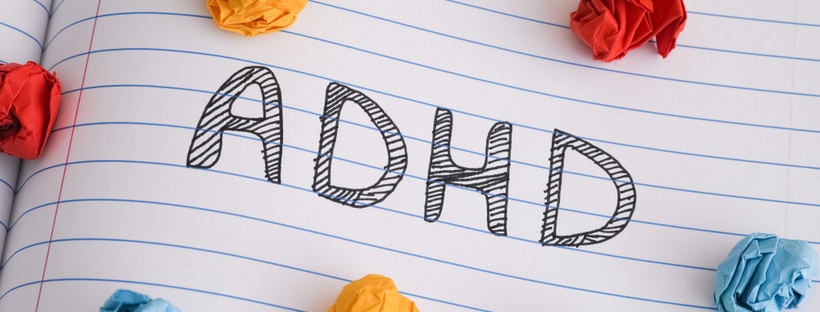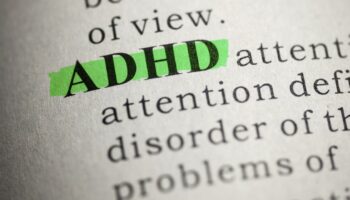Attention-Deficit Hyperactivity Disorder (ADHD)
The Nystrom & Associates provider consulted for this article is Dr. Karin Ryan, PsyD, LP, Clinic Director, Outpatient Therapist.
Attention-Deficit Hyperactivity Disorder (ADHD) is yet another mental health disorder that is commonly misinterpreted. You might hear someone say, “I’m so ADHD” even though they do not have a diagnosis. These types of phrases can invalidate someone that experiences ADHD. Similarly, it can make it difficult for others to know when it might be something they need to get support for. To combat this, let's review the symptoms, types, causes, and treatment options for ADHD.
Related: ADHD: Learn All About the 3 Types
Nystrom & Associates on Twin Cities Live
First, watch Dr. Karin Ryan on Twin Cities Live as she discusses the misinterpretations of ADHD and details accurate information.What is Attention-Deficit Hyperactivity Disorder?
According to the National Institute of Mental Health, “Attention-deficit/hyperactivity disorder (ADHD) is marked by an ongoing pattern of inattention and/or hyperactivity-impulsivity that interferes with functioning or development.” The key part is that it interferes with day-to-day functioning. In addition, Dr. Karin Ryan outlines several symptoms of the different types. Keep in mind that symptoms must be present for at least six months and also be inappropriate for the associated developmental level. Related: How Do You Know if You Have Panic Disorder?Inattention:
- Frequently fails to pay attention to details or makes careless mistakes in work or school.
- Has trouble holding attention on tasks or play activities.
- Does not seem to listen when spoken to directly.
- Often does not follow through on instructions and fails to finish schoolwork, chores, or responsibilities.
- Generally has trouble organizing tasks and activities.
- Regularly avoids or dislikes tasks that require mental effort over a long period of time.
- Frequently loses things necessary for tasks and activities (pencils, tools, wallets, keys, glasses).
- Easily distracted.
- Is often forgetful in daily activities.
Hyperactivity and Impulsivity:
- Often fidgets with or taps hands or feet, or squirms in seat.
- Typically leaves seat in situations when remaining seated is expected.
- Often runs about or climbs in situations where it is not appropriate (adults feel restless).
- Generally is unable to play or take part in leisure activities quietly.
- Is often “on the go” acting as if “driven by a motor.”
- Continually talks excessively.
- Frequently blurts out an answer before a question has been completed.
- Usually has trouble waiting their turn.
- Frequently interrupts or intrudes on others.
Types of Attention-Deficit Hyperactivity Disorder
- Combined Presentation: If enough symptoms of both criteria inattention and hyperactivity-impulsivity were present for the past six months.
- Predominantly Inattentive Presentation: If enough symptoms of inattention, but not hyperactivity-impulsivity, were present for the past six months.
- Predominantly Hyperactive-Impulsive Presentation: If enough symptoms of hyperactivity-impulsivity, but not inattention, were present for the past six months.
Prevalence in Children & Adults
ADHD is one of the most common neurodevelopmental conditions in childhood. The CDC indicates that 8.8% of the US population has been diagnosed with ADHD, and there are many with mild symptoms that have not been. Boys are about twice as likely to receive an ADHD diagnosis than girls because ADHD symptoms present differently in girls.- Boys with ADHD usually show externalized symptoms, such as running and impulsivity.
- Girls with ADHD, typically show internalized symptoms that are more subtle and harder to identify such as inattentiveness and low self-esteem, more stress, cognitive restlessness, or jumping from one thought to the next.
- Boys also tend to be more physically aggressive, while girls tend to be more verbally aggressive.
- Difficulty focusing and prioritizing (missed deadlines, meetings, or social plans).
- Difficulty controlling impulses or coping with stress and being restless. For example, being impatient waiting in line or driving in traffic, or experiencing mood swings and outbursts.
Attention-Deficit Hyperactivity Disorder Testing, Causes, & Treatment
Testing
The diagnosis of ADHD can be difficult because certain ADHD symptoms are similar to those caused by other conditions, such as anxiety or mood disorders. A helpful way to determine if you have ADHD is through testing through psychological testing, with assessments specifically designed to assess for ADHD. This involves working with a psychologist who is trained to test for ADHD.Causes
- Genetics: ADHD can run in families, and studies indicate that genes may play a role.
- Environment: Certain environmental factors also may increase risk, such as lead exposure as a child.
- Neurodevelopment: For those with ADHD there are differences in certain regions of the brain. The includes regions that control executive functioning (problem-solving, attention and concentration, planning and reasoning), emotional reasoning, goal-directed behavior and motivation, motor movements, and working memory. You can see these differences in MRIs and scans. They are truly biological differences that we must learn to work with. They are not worse, simply different.


